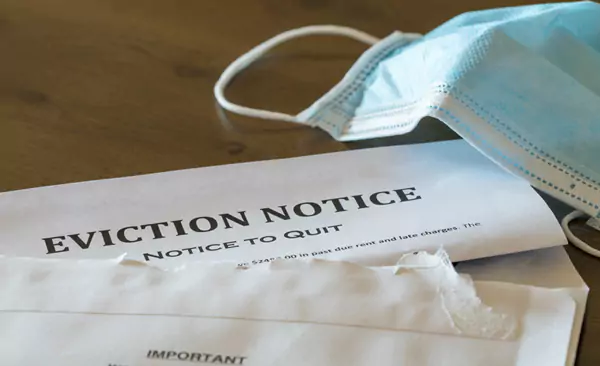Avoid Eviction During COVID
Posted by Century Support Services on Oct 27, 2020

When the job market is so tight and the benefits so few, eviction is a real threat for many Americans. The protections in place have a few loopholes in them, and landlords everywhere have strong incentives to find them. It helps to have the details, so you’re empowered as a renter. You may be staying in someone else’s place, but the landlord doesn’t hold all the cards.
Qualified Renters
The Center for Disease Control (CDC) was granted authority to make housing decisions by President Trump during the pandemic. On September 1, the CDC came out with eviction protections for qualified renters through the end of the year (Dec 31, 2020).
To qualify, a renter must show that they:
Experts Say: Keep These Appointments
While your doctor is an invaluable touchpoint in deciding which types of care can wait and which require immediate attention, experts do agree that certain visits and types of care belong at the top of the list These include:
-
Are unable to pay for the full rent due to a loss of wages, unemployment, or serious medical expenses.
-
Stand to make no more than $99,000 in 2020.
-
Have already tried for government financial aid.
-
Made rent payments as best as they possibly could.
-
Have no other housing options and are in danger of becoming homeless or moving into crowded housing.
The idea behind this rule is that the public is safer if they stay in their own homes. The more people have their own space, the more we can keep the general virus under control. When as many as 40 million people are at risk of eviction, this protection could be the key to avoiding a catastrophe.
Eviction Protection Expiration

Renters still have to follow all other terms of their lease, meaning they can still be evicted for things like disorderly conduct. Plus, this protection does not disqualify renters from owing in the future. Once the tenant no longer qualifies or the protection order expires in the area, the tenant is still on the hook for the full amount.
This means that a landlord can either sue for eviction or set up a payment plan. Landlords also reserve the right to charge interest and penalties according to the signed contract. You should check the terms of your leasing agreement but, in general, it comes down to whether the landlord is willing to work with you.
The Nuts and Bolts
You must meet all criteria to qualify for the eviction order, and you must complete a form for every person listed on the lease agreement. If the landlord does try to evict you, you need to give the form to the landlord to show that you are under protection. This only applies to those living in permanent housing, as opposed to temporary or seasonal. If you’re a homeowner, you’ll need to contact your lender to explain the situation to them.
Local Protections

If your state, city, or township is granting additional eviction protection, you should follow the order that gives you the best terms. California has already stipulated that a landlord cannot evict someone for back rent after the protection order ends (which is not something the CDC allows for). It also extends the order to the end of January.
What You Can Do
No matter how lenient the eviction protections are, they can still seem bleak in these uncertain times. The best thing for renters to do is to be proactive and step up their communication skills. Prioritize rent whenever and wherever possible, and cut down expenses as much as you can. This might mean skipping credit card bills to pay for rent.
In addition, try thinking outside of monetary transactions. For example, maybe your landlord will allow you to exchange manual labor for back rent. Whether it’s maintenance on your place or on an empty property, this could be a win-win for everyone.